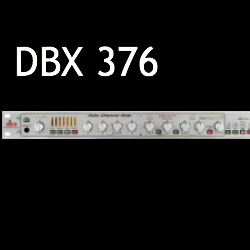Musician’s Corner Gear Guide
Digital Audio Workstation
By Glenn Thomas
As a consumer in the digital world, the growth of new formats and products can either make life great or difficult for end users. Many subscribe to monthly online publications, downloading issues in PDF format to print out, or to read on portable devices when they are released. However, myself and others still prefer the traditional mailed hard copy of a magazine. I believe there’s something special about holding a mag in your hands, thumbing through the pages soaking in the content.
Discovering new companies as they emerge trying to outdo the competition with trumped up specs and claims, and deciphering what is fact or fiction can make ones head spin! Their colorful large ads with tiny descriptions send us gear heads to the www to learn more about their product and read experiences by others. Online forums are often loaded with love and loathe for a particular product, which I find helpful since money is hard to invest into a home project studio these days. The unfortunate part of buying today means it will likely be obsolete tomorrow. This is why we wait like kids on Christmas Eve wondering what’s inside the box under the tree! It’s part of the fun of having G.A.S., better known as Gear Acquisition Syndrome!
Thank God, with technology we have new ways to capture tone to tape without having to turn the amps up to 11, have the police called, and be in the doghouse! With today’s DAW (Digital Audio Workstation), they come standard with plugins that can make George Benson sound like Eddie Van Halen without needing to change genres! There are also third party plugins you can try before you buy to see if they do the trick for you. They are usually called “LE” for “Light Edition” that can be downloaded and installed without having to deplete your cash reserves or run up your credit card.
So let’s plug that guitar into an audio interface connected to your computer and launch an amp simulator. Finally you have the wall of sound you could have never achieved in the past while mic’ing up an amp. Plus, you’re not getting into spouse trouble to boot. That’s always a bonus.
As you tweak the plugin interface, switching out amps, cabinets and effects, you will come to learn something important. It sounds like a digital amp simulator. Which may be what you are after, but I want to tell you there is another way to get that fat, warm, luscious, creamy, crunchy. (insert whatever adjective you want here)
If you have the means of sending a track from your DAW, providing playback through a multi-out audio interface and a tube pre-amp, then you are good to go. Most tube mic pre’s have both options of XLR input or the 1/4 inch instrument input. The 1/4” will give you a better sound. Connect and add the guitar amp simulator of choice in your DAW. Once you have it dialed in, bypass the amp simulator, and just work on the input of the pre that your guitar is connected to. Bypassing the amp simulator allows you to hear the way the pre responds when soft or hard strikes are played on the connected guitar. Adjust the preamp gain to just under the distortion point. If your pre has a built-in compressor, try using a 4.1 ratio, fast attack, medium release and -3dB of reduction on the threshold.
Now that you are dialed in, check the input on the amp simulator plugin and set it up to just under clipping. Try choosing a typical Fender or Mesa Boogie amp setting and start on the low end of the gain. Increase until desired results. In tracking like this, I find my guitar tone richer, fuller and even has more dynamics than the straight in approach. Sometimes a -6 narrow notch at 2k helps remove some nasal honkiness, but I would also do this with real amps to get my sound.
The advantage to recording this way is that you are recording your instrument dry, with only the color and tone of the tube pre being printed. This will let you track the perfect take, but you are not stuck with the chosen amp simulator sound. Once you blend your new recorded track in the mix you can now switch amps, effects and adjust gains, equalizer, and compressors. If the client says; the guitar appears to thin or to dark sounding, its a quick fix and you do not have to re-track the perfect take. This is called Re-Amping.
If you’re looking for a recommended product for a tube pre-amp, I suggest the DBX 376 Mic Pre. I have used different ones, but this particular model I use for this purpose only, and the people I work with always ask me how did I get that sound? Well there you go, I just gave you my first secret:)
Glenn is the owner of ITune Audio, a production studio in New Foundland. Glenn is making a name for himself by providing impeccable services for songwriters, artists and bands.

 Listen Live
Listen Live
Leave a Reply
You must be logged in to post a comment.